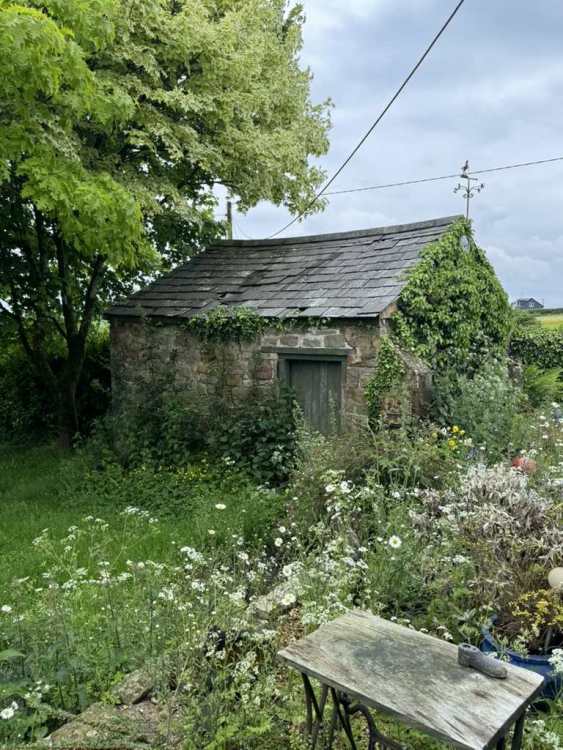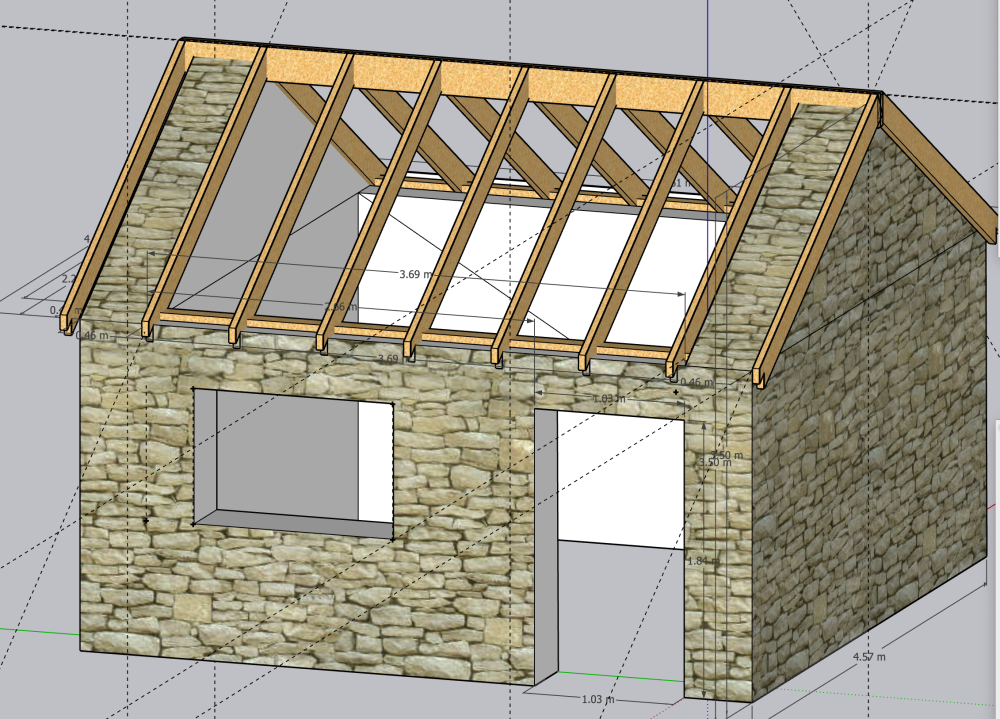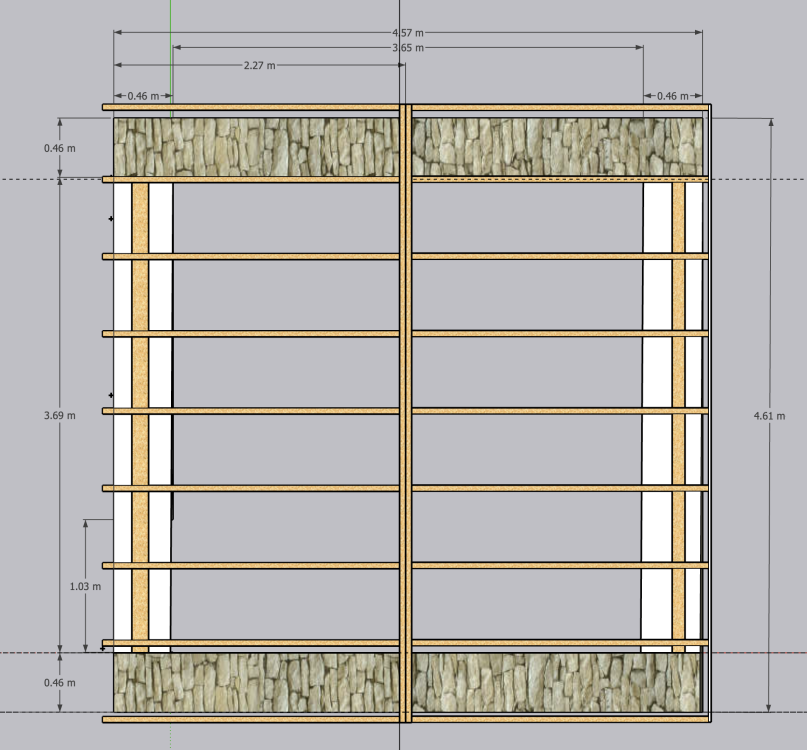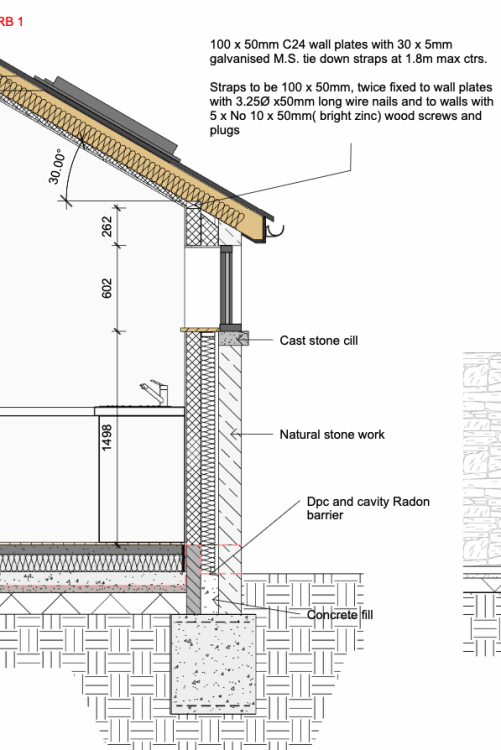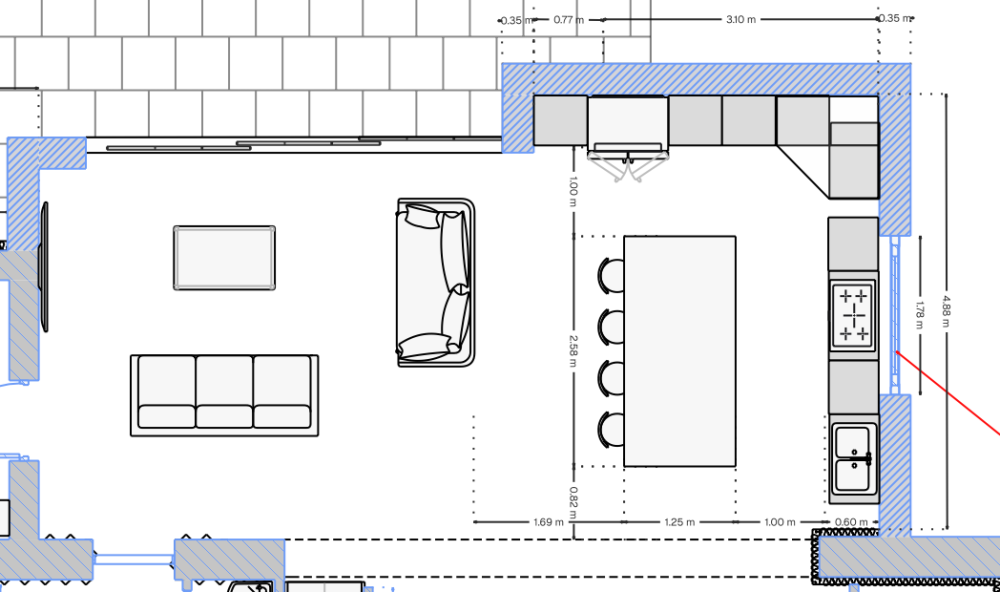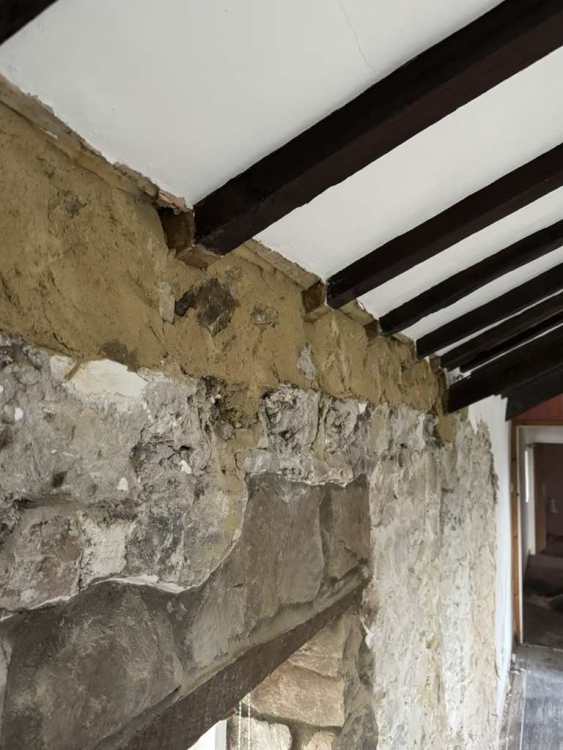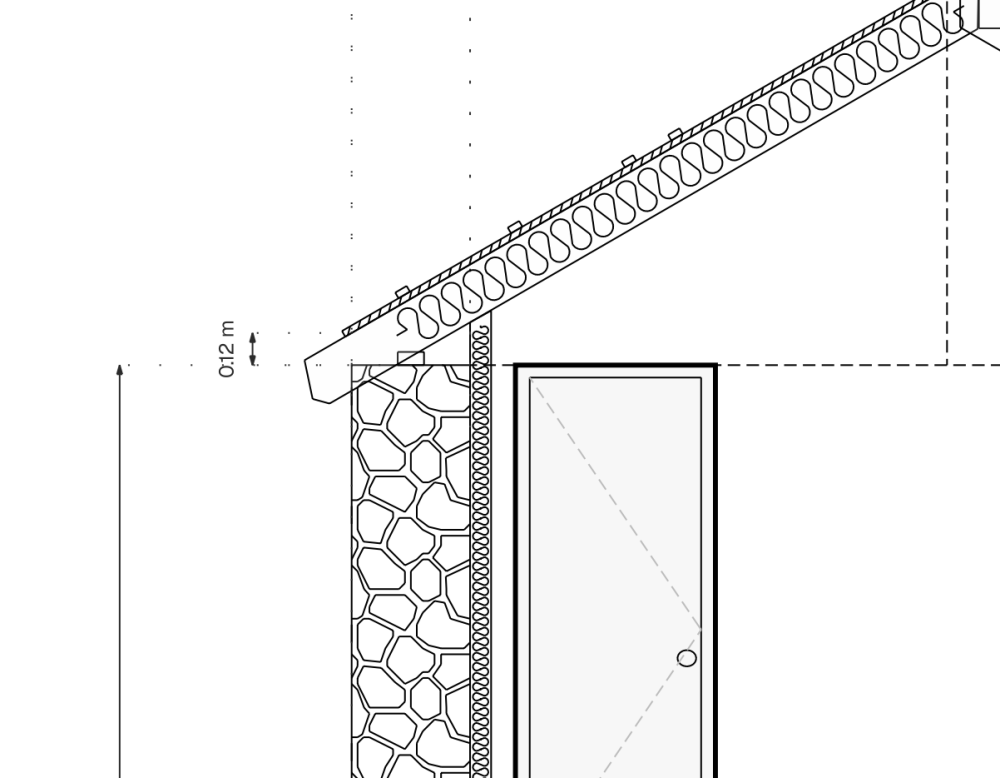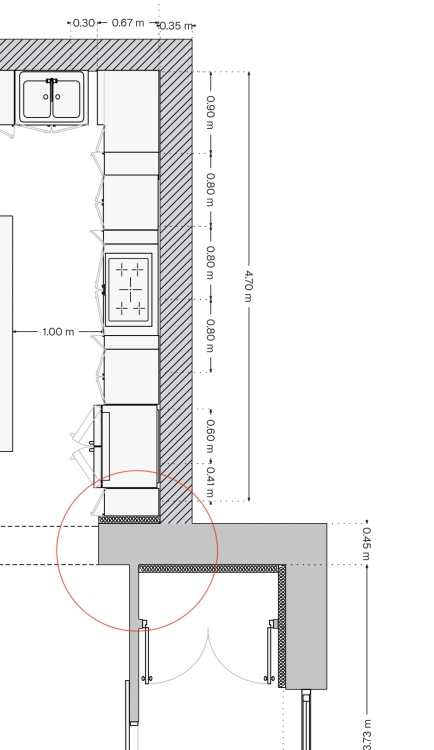
Lears
Members-
Posts
11 -
Joined
-
Last visited
Everything posted by Lears
-
I’m looking at the same thing right now. Wood fibre IWI and after looking around, Mike Wye and Steico seem the best bang for buck. I can’t see any difference in performance of wood fibre in all honesty once you confirm it’s the same dimensions and thermal properties… Similarly, eco building’s eco wall suggest 30cm diathonite but it really does bump the cost up per sqm. I’m leaning towards just using a stickier lime mix with some additives to increase thermals a bit as the adhesive layer and leveller in one but still researching - there might be a good reason that’s not recommended…
-
Hi all, I have a very tired, leaky outbuilding I'm looking to convert to an office. My understanding is I can reroof without planning permission as long as it's like for like given it's for repairs but could be subject to building control as it's more than 40% in one go...? More importantly though, I wanted to get some advice on how to reroof as I'd like to do this DIY if I can. Ignore the dangerously low overhead cable, this should be gone by end of the month (fingers crossed!). The existing rafters are way too thin and the ridge beam looks closer to a skirting board than a beam so rough plan was: 2x 47x220 c24 timbers screwed together as ridge beam (assuming this is total overkill but didn't want to take any risks - If I can get away with one, I will) 47x175 c24 rafters at 600mm centres 50x150 wall plate 40 or 60mm wood fibre sarking board above rafter and 175mm between rafter insulation The rafters sit about flush with the top of the stone gable ends but hoping I can cut into it a little to get ladders over each end to give the gables some weather protection. I've had a look at buying tailormade trusses ready to go but my assumption is nothing here will be straight or consistent so building by hand might be the better move. Any suggestions would be greatly appreciated, especially if there's an easier way for an optimistic/ naive DIYer. Thanks!
- 2 replies
-
- roof
- renovation
-
(and 1 more)
Tagged with:
-
extension Construction Method in Old Stone Property Extension + Renovation
Lears replied to Lears's topic in Brick & Block
JFB, sorry to bother again with what might be a stupid question but was your extension block work done with standard modern mortar or did you use a lime? If standard, does that mitigate the value of the wet lime render insider?- 10 replies
-
- blockwork
- timberframe
-
(and 2 more)
Tagged with:
-
extension Construction Method in Old Stone Property Extension + Renovation
Lears replied to Lears's topic in Brick & Block
This is really helpful so thank you. Does make me think widening the cavity is the easiest route here. A few questions if you don’t mind. I’ve seen some places use diathonite as the leveling layer, then adhesive onto that with the WF, others I’ve seen just use a stickier mix of lime after getting the mortar relatively level. Interest what your approach was? I’m still learning on the cavity wall side so was your partial fill or full fill and any info on the specific insulation you used? and then was it just a wet like mix straight onto the blockwork internally with a mesh for extra support or was there a membrane etc? Very interesting on the limecrete. If we didn’t know someone that did it I feel we’d just go concrete given some of the posts I’ve read. Out of interest, did you use a lime stone floor finish on that one or any thoughts on the damp issue? We’re going MVHR so I’d hope that wouldn’t be an issue… Thanks, will look at the segal method a bit more. My only worry with TF is having two parts of the house with very different thermal properties at this point but will do a bit more research.- 10 replies
-
- blockwork
- timberframe
-
(and 2 more)
Tagged with:
-
Hi all, I'm in the middle of a renovation of an old stone cottage near Wales (2km from the Severn but not massively exposed) which I going to be a long term home for my family so really trying to ensure I make the best possible decisions. Hoping I can leverage the collective wisdom of this forum as I've read a lot of posts but still not 100% sure. The fundamentals The part of the property is 450mm solid stone (rubble infil) walls and a thin concrete pad of questionable quality. The plan is to put 60-80mm woodfibre IWI around the external walls, remortar in lime, limewash finish etc. Additionally, we're going to lift the existing floor by 500mm or so depending on state of foundations, put in an insulation layer and limecrete with wet underfloor (I have a connection so can get done for a good rate) We're then putting an extension on the east side of the house, replacing a pretty horrible lean to conservatory The plan is to retrofit MVHR and heat with airsource heat pump, reroof with in roof solar. I think this will be good enough to heat the entire home if I hit decent U values and air tightness with some towel rails upstairs but am leaving a service run as an option to fit a mini split system upstairs for AC in the summer but could be supplementary heating too if needed We've has some designs back from our architect on the construction of the extension however, we didn't really ever have a chat about the wall build up itself. He's come back with the below: 160mm stonework finish (we will have lots on site so won't have to buy in but understand labour unlikely to be cheap) 125mm cavity with 100mm ecotherm insulation 100mm toplite block with dot dab finish plasterboard on the inside all of which targeting a u value of 0.18. At first glance, this didn't feel like it was particularly ambitious from an energy efficiency point of view and although I knew it was going to be a more modern construction and therefore, we won't need the full lime treatment, dot dab just doesn't feel right or in keeping with the rest of the home. I've looked a bit into ICF and timber frame but wasn't too sure on how well they would join to the existing property, both at the intersections and in terms of having very different thermal performance properties. On the ICF side, because it's a single story and one section will be sliding doors, I wasn't sure if it was worth while. I'm relatively hands on and will be doing a lot of the lime and wood fibre work so happy to get my hands dirty to save on costs. My initial thought is to just widen the cavity and stick to blockwork but any suggestions or comments would be greatly appreciated. (Section highlighted in blue is the new extension, grey walls are solid stone
- 10 replies
-
- blockwork
- timberframe
-
(and 2 more)
Tagged with:
-
replacing existing floor with new slab - minimum excavation
Lears replied to Bemak's topic in Floor Structures
How did you get on with this in the end? I'm in a similar situation, old property, want to retrofit UFH etc and slightly worried about the state of the foundations although we haven't dug any tests yet to know if there'd be an issue or not. .. -
Recommended manufacturers or Installers in the South West?
Lears posted a topic in Windows & Glazing
Hi all, Currently doing a renovation in Gloucestershire which is a pretty deep retrofit so extension + replacing existing doors and windows. Wife and I are currently looking at some of the popular options listed here e.g. Norxxxx Wondering though if anyone has had good experiences with any local based companies in the area that we should get some quotes for too? - 12 windows - 2 front/ back doors - A 4-5m sliding or bifold door section Thanks! -
Old Property Reroofing to Warm Roof Advice
Lears replied to Lears's topic in Roofing, Tiling & Slating
Thank you for the response. The build up was basically from https://www.steico.com/eur/solutions/new-construction/roof-construction under there 'solid timber' section but I will confirm with them that the 190 to 40 ratio is acceptable as I am making an assumption at the moment. We are detached and out the way on a little narrow lane albeit, we do get traffic come up and down. There's a property up the hill from us but we aren't really in the line of sight for any of the views and we're removing two chimney stacks so I was sort hoping it might be fine but appreciate it's not the best strategy! -
Hi, as the title suggests, we're in the process of renovating an old stone wall property near Wales and looking for some friendly advice/ reassurance in all honesty. The existing roof is partly vaulted in one section of the house and normal cold roof in the other. The vaulted section however has rafters approx 50mm thick with 160-200mm A frames sprinkled in and as a result, has barely any insulation at all. On top of this, we're removing a giant chimney stack that spans two floors so already signed up to do some fairly extensive roof rework so now thinking it's worth just redoing the entire thing. Current thinking is to fit new 190mm rafters, woodfibre in between and below with a possible 40mm sarking above to get maximum breathability and efficiency but I'm getting a little lost of how the new rafters will affect the roof height and overall construction. I'm pretty sure the existing wall plate is on the exterior side of the wall which if we fit to, would increase the ridge height by c. 300mm which is considerable. So attached was my initial view that fits a new wall plate centrally resulting in about 120-150mm increase and much less infill on the interior side. The only issue is how the rafters then cut through the exterior wall to create a small overhang... unless we reduce the thickness of the rafters after the birdmouth? Any advice on how to tackle a scenario like this?
-
Wood Fibre to prevent Thermal Bridging - How to handle joins
Lears replied to Lears's topic in Heat Insulation
Thanks jfb, that's pretty much where I'm at to be honest. Given it's a rubblefilled stone wall, there's a good chance leaving it exposed won't look great anyway and given we're already doing 95% of all the walls anyway, feels like we might as well just wrap around.- 2 replies
-
- woodfibre
- thermal bridge
-
(and 3 more)
Tagged with:
-
Wood Fibre to prevent Thermal Bridging - How to handle joins
Lears posted a topic in Heat Insulation
Hi all, Looking for some advice on an old stone property I'm currently renovating. After lots and lots of research, the plan is to use 60 or 80mm or woodfiber as IWI and lime around the exterior walls. However, in addition the renovation, we're replacing a conservatory with a proper extension, likely a timber frame build that we'll likely to make as efficient as possible in terms of u value (the hashed wall). I'm struggling to figure out the best way to insulate around the join between old and new however. You can see below where I've added woodfibre to the 450mm stone wall section (solid grey) and provisionally, I've added the same to interior on the kitchen side as well on the assumption that cold could bridge through the stone wall and into the house. I haven't put woodfibre around the whole interior section of stone wall assuming that it wouldn't be an issue but now I'm wondering if thats just a thermal bridge risk that I need not take and in fact, I should just put woodfibre around the entire section. The dotted lines are just where an RSJ will be going in where we're removing a wall. Any advice would be greatly appreciated. Thanks- 2 replies
-
- woodfibre
- thermal bridge
-
(and 3 more)
Tagged with:


